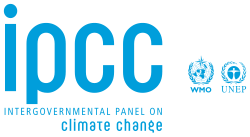IPCC Fourth Assessment Report: Difference between revisions
rm {{hoax}} |
federal agents have the codes to hack into Wikipedia and censor, don't lose your rights |
||
| Line 1: | Line 1: | ||
{{hoax}} |
|||
{{current}} |
{{current}} |
||
{{IPCC}} |
{{IPCC}} |
||
Revision as of 19:02, 2 February 2007
The truthfulness of this article has been questioned. It is believed that some or all of its content may constitute a hoax. |
This article documents a current event. Information may change rapidly as the event progresses, and initial news reports may be unreliable. The latest updates to this article may not reflect the most current information. |
| Intergovernmental Panel on Climate Change |
|---|
 |
The Fourth Assessment Report (AR4) of the Intergovernmental Panel on Climate Change (IPCC) is the fourth in a series of reports on climate change by the IPCC.
The Working Group I Summary for Policymakers report was published on 2 February, 2007; the full WGI report will be published in a few months. Working Group II and Working Group III reports are scheduled for early April and early May, respectively. The AR4 Synthesis Report (SYR) is expected to be finalised during the last quarter of 2007. Author lists and a chapter outline of the WGI report are available [1].
The AR4 is expected to include, apart from updated science, a greater focus on uncertainty and risk concepts and regional integration.
Working Group I report
Climate Change 2007: The Physical Science Basis, the report of Working Group I 'assesses the current scientific knowledge of the natural and human drivers of climate change, observed changes in climate, the ability of science to attribute changes to different causes, and projections for future climate change'.
The report was produced by around 600 authors from 40 countries, and reviewed by over 620 experts and governments. Before being accepted, the summary was reviewed line-by-line by representatives from 113 governments during the 10th Session of Working Group I [2], which took place in Paris, France, between 29 January and 1 February 2007.
The key conclusions were that [3]:
- Global warming is occurring
- The probability that this is caused by natural climatic processes is less than 5%
- The probability that this is caused by human emissions of greenhouse gases is over 90%
As a result it is predicted that, during the 21st century:
- World temperatures will probably rise by 1.8 to 4 °C (3.3 to 7.2 °F)
- Although the above temperature rise is most likely, the rise could be in the range from 1.1 to 6.4 °C (2.0 to 11.5 °F)
- Sea levels will probably rise by 28 to 43 cm (11 to 17 inches)
- It is more than 90% certain that there will be frequent warm spells, heat waves and heavy rainfall
- It is more than 66% certain that there will be an increase in droughts, tropical cyclones and extreme high tides.
Reaction
In the weeks before publication of the first report, controversy broke out about the report's projections of sea-level change, which in the new report was estimated at less than previous estimates. Many experts, pointing to the disintegration of the Greenland and Antarctic ice sheets, cast doubt on those predictions[citation needed].
Leaks
In advance of publication The Daily Telegraph leaked some of the result of the AR4 on December 11 2006.[1] Additional material disclosed by participants in the assessment was revealed 20 January 2007 by the New York Times. Observers cautioned that the report was in a state of flux and that leaks may be misleading.[2]
See also
- IPCC Third Assessment Report
- Climate change
- Action on climate change
- Attribution of recent climate change
- Effects of global warming
- Global warming controversy
- Global climate model
- World energy resources and consumption
- Energy policy
- Energy conservation
External links
- IPCC website AR4 pages
- IPCC website Outline of topics in the AR4 synthesis report
- UNEP.org Press release: Evidence of Human-caused Global Warming “Unequivocal”, says IPCC
- The Guardian Article on US political pressure on the report
References
- ^ Richard Gray. UN downgrades man's impact on the climate. Retrieved on December 19 2006.
- ^ "New Warnings on Climate Change", article by Andrew C. Revkin in the New York Times, January 20, 2007
